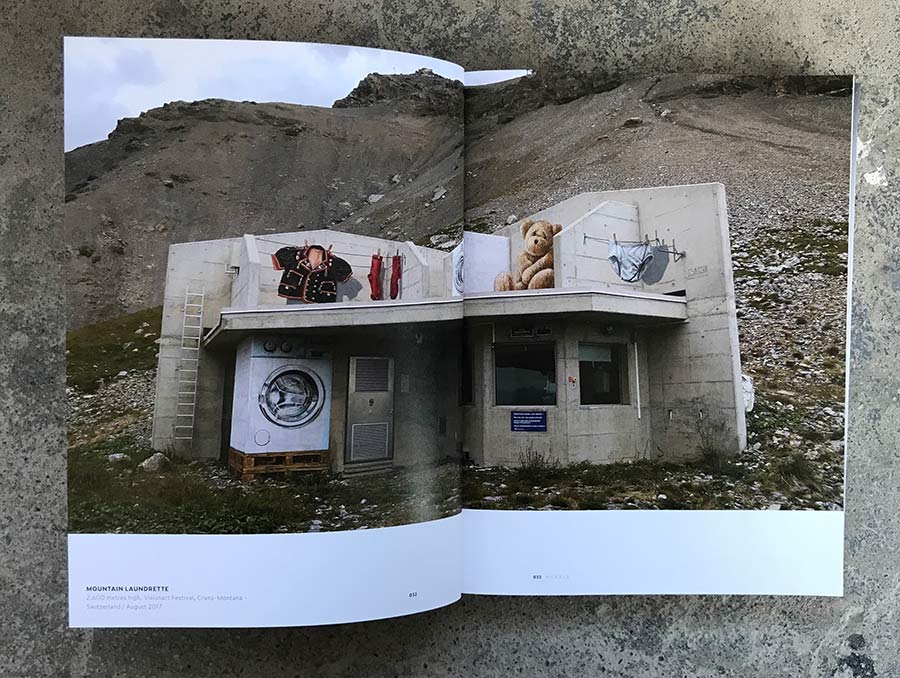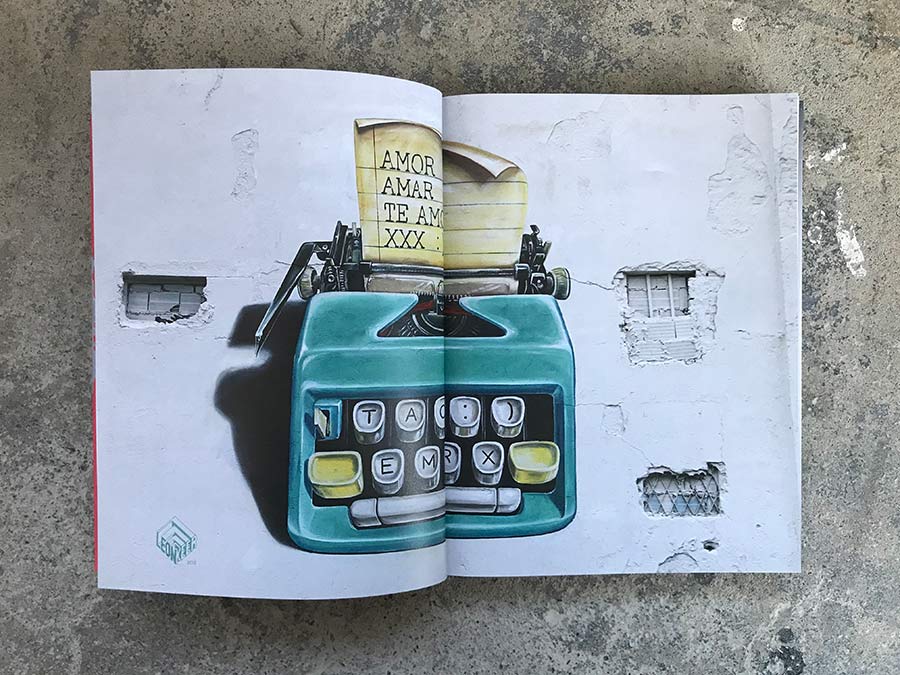One of the challenges in creating a book about anamorphic art is presenting images that tell the viewer that they are being tricked by perspective yet hold onto the magic that this unique art conjures in people who walk by it on the street.

In a way, that brass skeleton key that allows entry into another world is precisely what Dutch pop-surrealist artist Leon Keer has been seeking for decades to evoke in viewers’ heads and hearts. Some would argue he is preeminently such; certainly, he is the wizard whose work on walls and streets has triggered memories for thousands of children and ex-children of the fantastic worlds they have visited.
“You develop your senses all your life. Through what you experience, you involve affinities and aversions,” he says in his first comprehensive bound collection of gorgeous plates entitled In Case of Lost Childhood Break Glass. “Your memories shape the way you look at the world. When it comes to reflecting my thoughts, my memories are key. I needed to feel some kind of affection or remorse towards the object or situation I want to paint.”

Looking through the various venues he creates with and within, you can find an imagination that fully entreats you to join in the fun. Whether they are street paintings. floor paintings, anamorphic rooms for you to pose in, experiments in augmented reality brought alive on your phone, enormous land art paintings, or oddly shaped painted canvasses, Keer is not keeping the fun to himself. You are the welcomed and necessary ingredient that will supremely complete the scene.
Los Angeles art dealer Andrew Hosner writes an introduction to the book, representing Keer to collectors and curating his work commercially. He is felicitously taken by the artist’s ability to conjure a familiar yet unusual world, describing the mind-melt that occurs during a typical Leon Keer encounter. “Bending your perspective, and opening your mind along the way, has never been more rewarding.”

As you turn the pages, you wonder what some of the stories behind the pieces are, and he’ll often give you a clear description of what was going through his mind when he created it or what the particular significance is to him. You may also marvel at his dedication to preserving that precious world that each of us once lived in. Ingenious, witty, technically precise, Keer is a responsive and trustworthy guide.

“Every day I try to be a child, but when I look in the mirror I am reminded that time is marching on,” he writes. “Gray hairs in my beard and a receding hairline make me realize that my childhood years are far behind. Yet my curiosity is never burned so bright.”




Other Articles You May Like from BSA:
Welcome to BSA Images of the Week, where that silence you hear is the controlled collapse of the entire economy. Blink. Notwithstanding the drama that monopolizes the airwaves courtesy our daily...
BSA has been supporting and donating to the organization Young New Yorkers and many of the participating artists who are in tonight's auction for a long time through our work for a number of years. Th...
New walls from Madrid from only a few weeks ago at the Urvanity Festival, before the city became known as a hub for Coronavirus, went on full lockdown – today closing all of its hotels… Zest (pho...
Elisa Capdevila has turned the walls of Barcelona's Paral·lel into a living history lesson with her latest mural, a tribute to the former Teatro Talia. Once a cornerstone of the Sant Antoni neighborho...
Today we visit the newest installations by Spanish artists who are participating in the community mural project that invites many disciplines and approaches to the public sphere, the "12+1 Project" i...
 BROOKLYN STREET ART LOVES YOU MORE EVERY DAY
BROOKLYN STREET ART LOVES YOU MORE EVERY DAY










